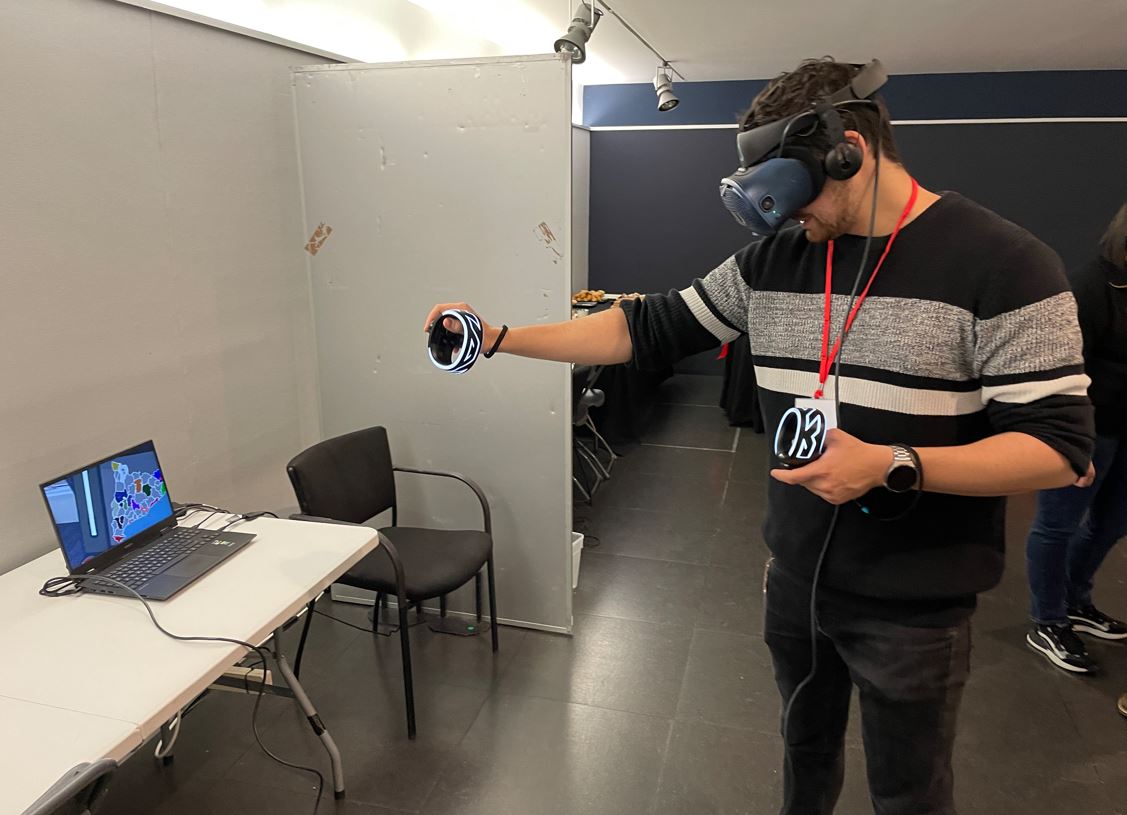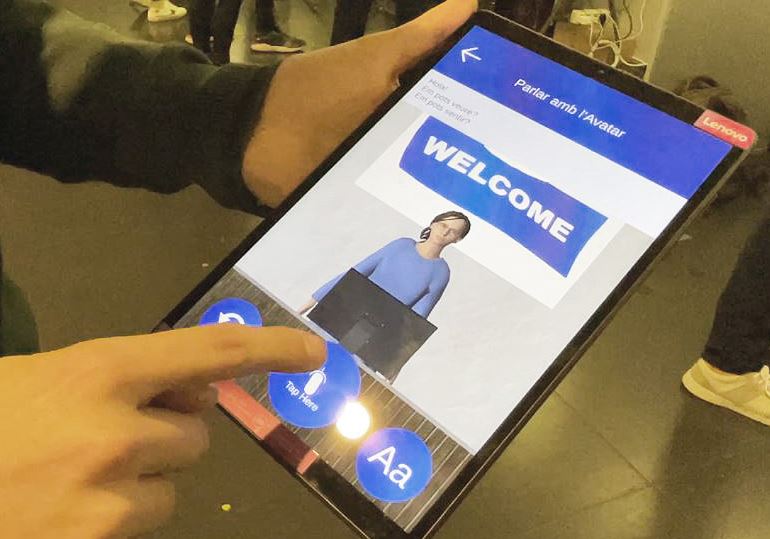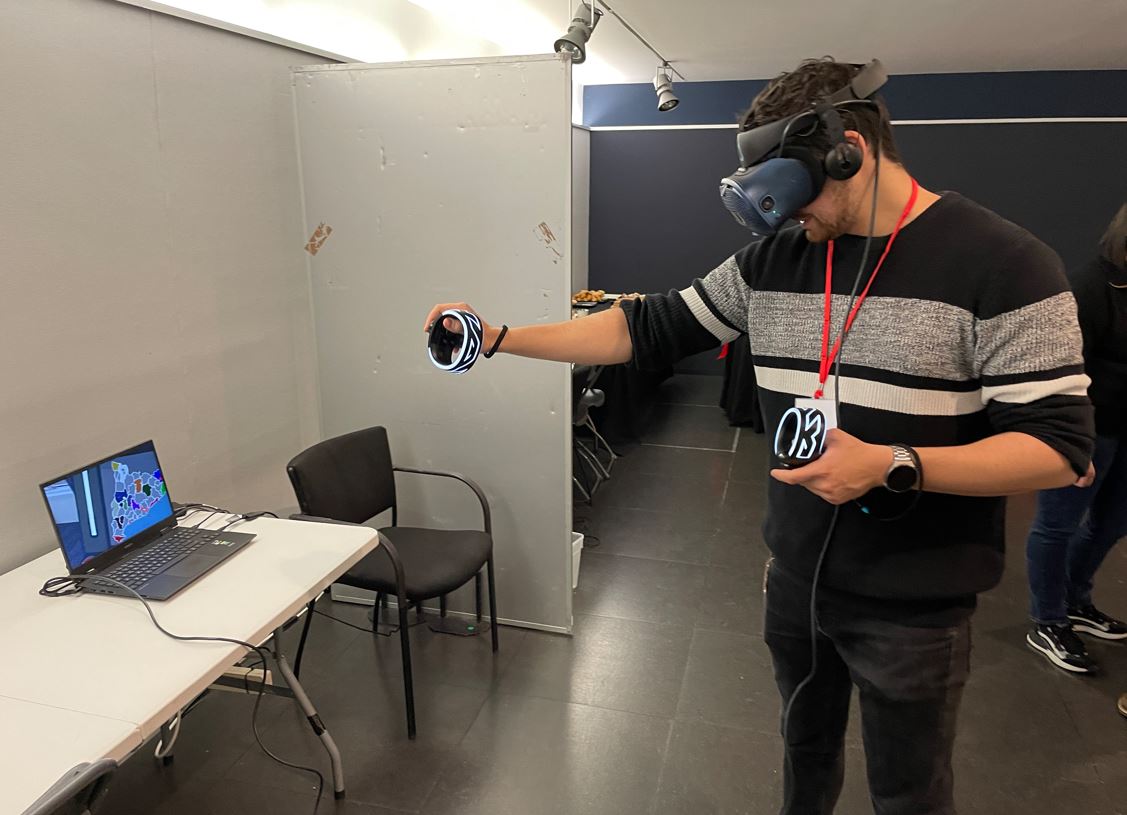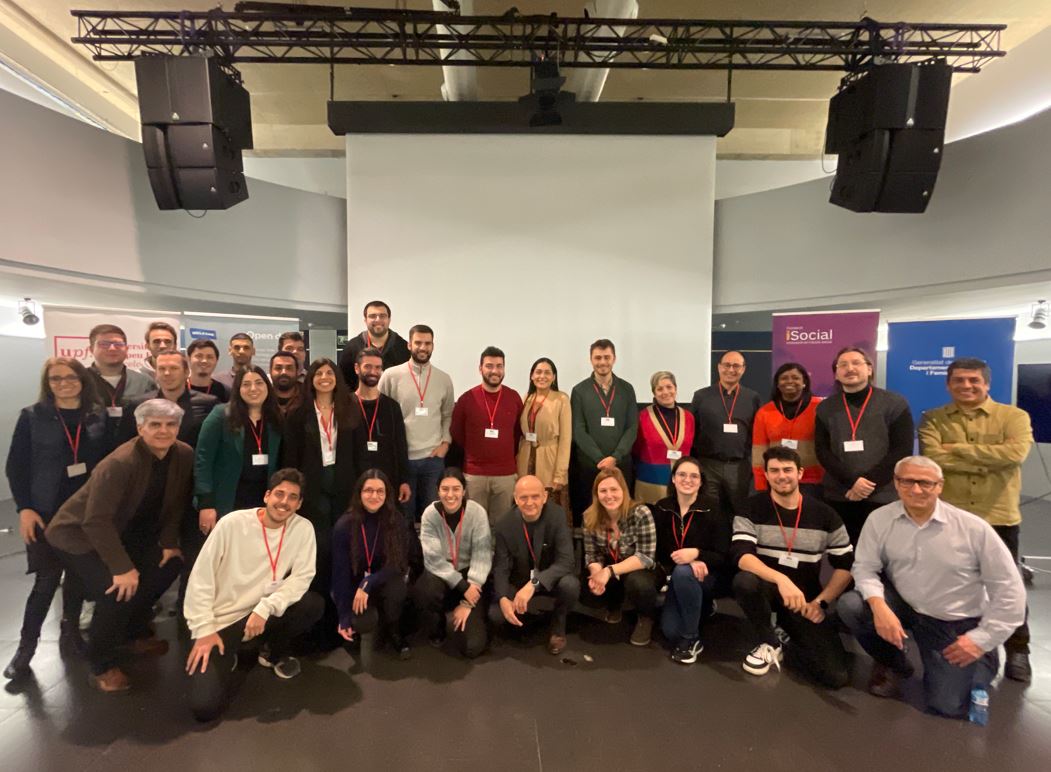The European project Welcome, coordinated by UPF, develops smart and virtual reality chatbots to improve reception services
The European project Welcome, coordinated by UPF, develops smart and virtual reality chatbots to improve reception services
The European project Welcome, coordinated by UPF, develops smart and virtual reality chatbots to improve reception services
The WELCOME project is developing intelligent technologies to improve reception and integration services for migrants and refugees in member countries. The project is funded by the EU’s Horizon 2020 programme. It brings together 15 institutions from different European countries in a consortium coordinated by Leo Wanner, an ICREA research professor at the UPF Department of Information and Communication Technologies (DTIC) and director of the Natural Language Processing research group at the University.

Over the coming months, prototypes of new intelligent and customized technological applications will be presented in different EU regions, including Catalonia, in the form of mobile apps and virtual reality environments, to facilitate the reception and integration of migrants and refugees in the EU. These technological solutions are the result of the WELCOME project, financed with nearly 4 million euros by the EU’s Horizon 2020 Programme. The project is coordinated by Leo Wanner, an ICREA research professor at the UPF Department of Information and Communication Technologies (DTIC) and director of the Natural Language Processing research group at the University.
The team that has been carrying out the project since February 2020 is made up of a consortium of 15 organizations from different EU countries. In Catalonia, in addition to UPF, the Welcome project involves the Department of Equality and Feminisms of the Catalan Government, the ISocial Foundation and the company NTT Data.
Yesterday, a WELCOME open day was held on the UPF Poblenou campus at which prototypes of technological solutions that aim to improve care and assistance for migrants and refugees at state, regional and municipal levels were presented. The pilot tests that are being carried out within the framework of this project have focused on Greece (at state level), Catalonia (at regional level, with the participation of the towns of Terrassa and Cambrils and the Anoia area), and the city of Hamm, in Germany (at municipal level).
WELCOME puts the potential of technology at the service of reception and integration in view of increasing migration flows to the EU
In view of the growth of migratory flows to Europe and the potential of technological advances to help with their management, the European Commission has funded a series of Research and Development projects with the aim of improving the quality of care and assistance provided to migrants and refugees. The solution provided by WELCOME, which is one of these projects, aims to alleviate the efforts of public authorities in providing care and assistance to the migrant and refugee population, which requires a broad availability of financial resources and qualified human teams for various reasons. On the one hand, there is great diversity among these people and, from an educational, social and cultural point of view, they can present significant differences from the population of the member countries. On the other, the complexity of the administrative procedures that must be done to regularize their situation and facilitate their reception and integration must be taken into account.
Useful technological applications for migrants and refugees, public authorities and NGOs

WELCOME, through the artificial intelligence of virtual reality and visual analytics technologies, seeks to contribute to overcoming these difficulties. In this sense, the coordinator of the WELCOME project, Leo Wanner, says: “The effort that public authorities must make to guarantee quality care for migrants and refugees can be alleviated and complemented by the technological solutions provided by the project”.
Eunice Romero, the general director of Migrations, Refuge and Anti-Racism area, integrated into the Generalitat Department of Equality and Feminism, has assured: "the WELCOME project allows us to move towards a friendly welcome, focused on the characteristics and needs of migrant and refugee". In addition, Romero emphasized: "artificial intelligence must be useful for moving towards an egalitarian and free of racism society ", because "the promotion of the artificial intelligence advances from a justice and equity perspective improves the quality of our democracy and the administrations service capacity ".
The representative of ISocial and project manager of the entity, Irene Rodríguez, added: “The technology on which the WELCOME project is working can be very useful both for newcomers and for the workers who are responsible for their integration into our society. It can also be a resource that reduces to some extent the workload that social services workers, workers of NGOs etc., may have”.
Each user has their own chatbot in a mobile application that acts as a personal assistant
Specifically, the WELCOME project has developed intelligent conversational technologies (smart chatbots) and virtual reality environments to facilitate a series of highly relevant actions of reception and integration, identified by the public authorities and NGOs that belong to the consortium, including registering documents, school counselling, social inclusion, preparation for job interviews and language learning.

On the one hand, the development of these technologies is based on techniques of natural language processing, human-machine interaction and autonomous planning based on artificial intelligence. On the other, it is based on the practices of design and realization of virtual environments. Each user has their own chatbot in a mobile application that acts as a personal assistant and facilitates user-friendly, intuitive interaction, in the user's language of preference. Currently, German, Catalan, Spanish, Greek and two varieties of Arabic (Moroccan and Eastern Levantine) are being experimented with. Several chatbots can also collaborate with each other, for example, to search for house/flat mates. The use of virtual reality has proved its effectiveness especially in the contexts of training, social inclusion and language learning.
WELCOME offers an application based on visual analytics that allows interrelating data on immigration and asylum for specific purposes
In both types of technology, users and public authorities always have absolute control, as professor Wanner points out. The authorities, in each case, also have the power to grant access to the applications to the migrants and refugees attended to by each of them. To support public authorities and NGOs, WELCOME offers an application based on visual analytics that allows crossing and interrelating the different data on immigration and asylum for specific purposes (such as, for example, identifying people with similar needs or people with a certain language level for language courses).

Representatives of the different partners involved in the Welcome project during the closing of the Open Day.
15 European partners involved in the Welcome project
WELCOME is a project promoted by a consortium of 15 consolidated high-level organizations (administrations, universities and research institutions, NGOs and technology companies) that have co-designed the technologies. In addition to UPF, the following are the project partners: Centre for Research and Technology Hellas, Charles University, Brno University of Technology, Deutsches Forschungszentrum für Künstliche Intelligenz, Sheffield Hallam University, NTTData, Nurogames, Método Estudios Consultores, Mind Refuge, Kentro Meleton Asfaleias, Department of Equality and Feminisms of the Government of Catalonia, CARITAS Verband Hamm e.V., PRAKSIS, and iSocial Foundation.
